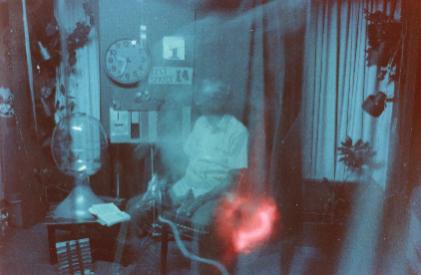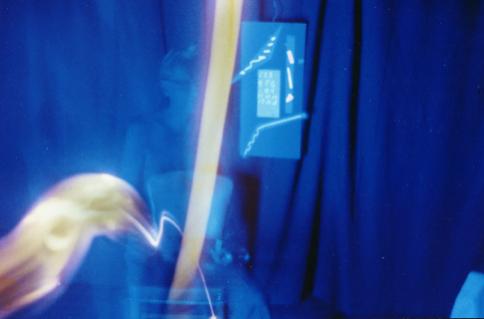Depth perception. Do we actually see the world in 2D?
My understanding is it's 3d - height, width, depth.
_________________
One Day At A Time.
His first book: http://www.amazon.com/Wetland-Other-Sto ... B00E0NVTL2
His second book: https://www.amazon.com/COMMONER-VAGABON ... oks&sr=1-2
His blog: http://seattlewordsmith.wordpress.com/
3 d is in illusion built by processing.
Two images are project on the retinas which are essentially flat.. Using stereoscopic alignment, and lighting differences we create a three dimensional image.
See: http://en.wikipedia.org/wiki/Hollow-Face_illusion
see also:
http://www.youtube.com/watch?v=Rc6LRxjq ... re=related
The "hollow face illusion" proves that we do not see what is actually there.
ruveyn
What confuses be about these theories is that i can feel 3d. I can close my eyes and feel a wooden cube has height. width, and depth. I'm also allowed weight, temperature, and texture. Illusions?
_________________
One Day At A Time.
His first book: http://www.amazon.com/Wetland-Other-Sto ... B00E0NVTL2
His second book: https://www.amazon.com/COMMONER-VAGABON ... oks&sr=1-2
His blog: http://seattlewordsmith.wordpress.com/
auntblabby
Veteran

Joined: 12 Feb 2010
Gender: Male
Posts: 113,740
Location: the island of defective toy santas
Our eyes give us two two-dimensional views which we extrapolate to a likely three-dimensional space based on our previous experiences, which includes our knowledge of the universe as gained from sight, touch, hearing, and other senses.
I don't believe the three-dimensional universe is an illusion. It is a convenient way of classifying reality as we currently experience it. As far as some of our senses experiencing things one way when other senses tell us they are another, it's a big universe, and one person can only absorb so much of it at a time.
auntblabby
Veteran

Joined: 12 Feb 2010
Gender: Male
Posts: 113,740
Location: the island of defective toy santas
our visual system can only [relatively crudely, for the most part] resolve light wavelengths between 400 and 700 nanometers. there is a whole universe of EM spectrum beyond those limits, that humans can never discern from their blinkered reality. living things look a lot different at different wavelengths, and in fact are transparent at some frequencies in the spectrum, as demonstrated by the late scientific investigator george meek-

the above image was taken using a large custom made 18A ratten light filter which would fit over the fluorescent light fixture in the ceiling, so when the incandescent lights were turned off and the filtered fluorescent lighting was turned on, light between 400 and 700 nanometers in bandwidth could not enter the lab. Since that light is the range of human vision, the room appeared dark to anyone standing in it. For one series of experiments, George mounted a 35mm Minolta camera on a tripod. The camera had an attached film magazine loaded with a large roll of 400 ASA Fuji color print film. The camera took 100 pictures in rapid succession while George sat in the chair in the artificial "dark." notice that the chair can be seen through george's legs. the pic below shows more of the transparency of the human body outside of the human visual bandwidth-

this is fascinating.
This is intriguing..
Hmm. Was George moving at all while those pictures were taken? Why can I see through his legs but not any other part of his body (maybe also his head)? And is clothing transparent at those wavelengths too?
I can't really tell what's going on in the second photograph. ![]()

the above image was taken using a large custom made 18A ratten light filter which would fit over the fluorescent light fixture in the ceiling, so when the incandescent lights were turned off and the filtered fluorescent lighting was turned on, light between 400 and 700 nanometers in bandwidth could not enter the lab. Since that light is the range of human vision, the room appeared dark to anyone standing in it. For one series of experiments, George mounted a 35mm Minolta camera on a tripod. The camera had an attached film magazine loaded with a large roll of 400 ASA Fuji color print film. The camera took 100 pictures in rapid succession while George sat in the chair in the artificial "dark." notice that the chair can be seen through george's legs. the pic below shows more of the transparency of the human body outside of the human visual bandwidth-

this is fascinating.
This is interesting, but which sort of camera is used? Does it use photographic film? The effect seen in these pictures could be just a product of this setting possibly affecting the photographic film itself. Isn’t an image formed in emulsion process when the film is being exposed to light? The reason behind the pictures could be just simply multiple exposure, which makes several images appear in the same frame. In multiple exposure bodies can seem almost transparent, but this superimposed body is formed without the setting described above or any experience of OBE.
Oodain
Veteran

Joined: 30 Jan 2011
Age: 34
Gender: Male
Posts: 5,022
Location: in my own little tamarillo jungle,
i dont really know what argument it poses though because the electromagnetic spectrum is as much a part of the known physical world as anything else, it interacts directly with it and what is shows is a direct consequence of it.
_________________
//through chaos comes complexity//
the scent of the tamarillo is pungent and powerfull,
woe be to the nose who nears it.
auntblabby
Veteran

Joined: 12 Feb 2010
Gender: Male
Posts: 113,740
Location: the island of defective toy santas

the above image was taken using a large custom made 18A ratten light filter which would fit over the fluorescent light fixture in the ceiling, so when the incandescent lights were turned off and the filtered fluorescent lighting was turned on, light between 400 and 700 nanometers in bandwidth could not enter the lab. Since that light is the range of human vision, the room appeared dark to anyone standing in it. For one series of experiments, George mounted a 35mm Minolta camera on a tripod. The camera had an attached film magazine loaded with a large roll of 400 ASA Fuji color print film. The camera took 100 pictures in rapid succession while George sat in the chair in the artificial "dark." notice that the chair can be seen through george's legs. the pic below shows more of the transparency of the human body outside of the human visual bandwidth-

this is fascinating.
This is interesting, but which sort of camera is used? Does it use photographic film? The effect seen in these pictures could be just a product of this setting possibly affecting the photographic film itself. Isn’t an image formed in emulsion process when the film is being exposed to light? The reason behind the pictures could be just simply multiple exposure, which makes several images appear in the same frame. In multiple exposure bodies can seem almost transparent, but this superimposed body is formed without the setting described above or any experience of OBE.
the website didn't say anything about multiple exposures, just that the minolta 35mm SLR was loaded with 400 ASA fuji colorprint film, and that 100 pictures were snapped in rapid succession. i don't know how he got the pictures to expose in the absense of light in the 400-700 nanometer range, as i am not knowledgeable about photographic things like that. the bluriness of the photos could be an artifact of slow shutterspeeds and/or the relatively large particle side of the 400 ASA emulsion. the various pics on the website purported to demonstrate visual evidence of OBE on the part of mr. meek.
auntblabby
Veteran

Joined: 12 Feb 2010
Gender: Male
Posts: 113,740
Location: the island of defective toy santas
the various streaking visual artifacts purportedly [according to the website] were visual evidence of spontaneous OBEs on the part of mr. meek while he was sitting in the [apparent] darkness of the photo studio during the photo session. and yes, clothing as well as flesh lose some of their opacity outside of the human visual range. there used to be a line of sony "nightshot" cameras which were used by voyeurs to surreptitiously take "naked" pics of clothed people using the low-light function of the camera- x-ray glasses for real.
What we "see" is made up of more than just what comes into the eyes. Sound plays a part too, as does touch, taste and smell, although sight plays the biggest part.
When we see something we see it in 2d but if we move and change our point of view we are effectively "scrolling" through to another 2d image that is related to the previous one.
| Similar Topics | |
|---|---|
| Hello, World! |
5 minutes ago |
| Hello, world! |
30 Mar 2024, 8:15 am |
| Understanding the world! |
19 Feb 2024, 9:07 am |
| I don't know where I belong in this world |
30 Mar 2024, 10:02 am |






